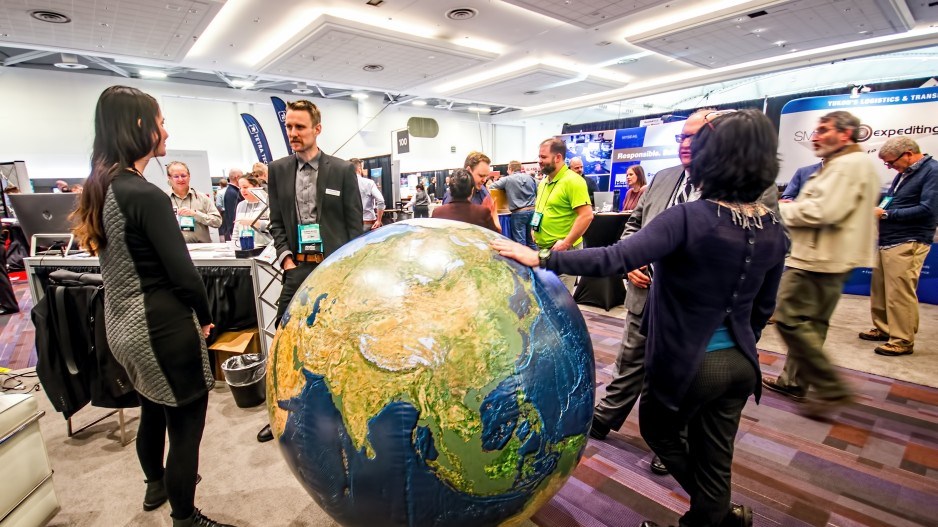Given the importance of U.S. institutional and retail investor capital for the province’s mining industry, it’s always instructive to hear what American investors like Rick Rule, president of Sprott U.S. Holdings, think about British Columbia as a place to build mines.
At a CEO breakfast at the opening of the Association for Mineral Exploration Roundup conference last week, Rule, a retail broker specializing in mining and exploration investments, said Vancouver has proved itself as a mining centre of excellence and is well poised to benefit from the convergence of mining and technology.
He said it needs to do just one thing: “Just. Don’t. Screw. It. Up.”
For a region that is only “reasonably well endowed geologically,” B.C. punches well above its weight as a mining industry player, he said.
The financing, legal, accounting, engineering, environmental and other professional services that have developed around mining in Vancouver have made it a global “one-stop shop” for the mining and minerals exploration sector.
“Vancouver has become a city that has one of the largest population bases of mining professionals on the planet,” Rule said. “You don’t have a lot of … institutional capital in Vancouver, but Vancouver has been unusually good at mobilizing capital from other places. And in that you have a real advantage – you have us. You have access to U.S. retail.”
Sprott Capital Partners, for instance, led a series of private placements totalling more than $20 million in 2019 in Vancouver’s Sun Metals Corp. (TSX-V:SUNM), which is developing the Stardust copper-gold project northwest of Fort. St. James.
Rule said cities around the world strive to become “hubs” or centres of excellence for a variety of industries such as biotech, artificial intelligence, clean technology and aerospace. Vancouver is already a mining centre of excellence, and its digital and clean-technology sectors provide a natural opportunity for synergy.
“The convergence in technology and mining is going to occur … and what better place for it to occur?”
Even environmental “messes” and disasters like the Mount Polley tailings pond collapse in 2014 present business opportunities, Rule said.
“There is going to be a monster, monster opportunity – how do I put this politely? – in cleaning up the messes that we’ve made historically,” he said. “The opportunities that are going to become available to issuers, to consultants, to everybody in environmental remediation, environmental underwriting and environmental stewardship, while they impose a cost, also have the opportunity to impose substantial benefits. And I think Vancouver has the ability to be absolutely at the forefront of that.
“Vancouver has amazing and, I believe, durable competitive advantages in the mining business. Durable enough that it actually doesn’t need to be improved on, except in the sense that if you don’t continue to improve, you degrade.”
Both the John Horgan government in B.C. and the Justin Trudeau government have taken steps recently that suggest they are not taking mining in Canada for granted, and are making efforts to support it and grow the sector.
It is an industry that accounts for 19% of Canada’s exports and 5% of Canada’s gross domestic product. It is also the single largest sectoral employer of First Nations, many of which say jobs and prosperity are important components of reconciliation.
Last year, the Trudeau government produced the Canadian Minerals and Metals Plan, in collaboration with the provinces, which acknowledged how important mining already is to the Canadian economy, and set out six areas of action to bolster the sector. They are:
•tax reform and financial incentives;
•addressing regulatory burden and overlap;
•increased funding for geoscience;
•settling Indigenous land claims;
•working with Indigenous communities in remote regions to address infrastructure deficits; and
•encouraging processing and smelting.
In the last budget, the federal government extended the mineral exploration tax credit out to 2024, and the Trudeau government also recently signed a collaboration agreement with the U.S. on critical metals.
Paul Lefebvre, parliamentary secretary to the minister of natural resources, said the critical metals plan aims not only to secure the supply of rare earths and other critical metals in North America through new mines, but also to develop the advanced manufacturing that uses these metals.
Lefebvre cited a battery manufacturing plant for electric vehicles as an example of the kind of manufacturing Canada has in mind.
“How do we secure all those minerals that support that industry?” Lefebvre said.
Provincially, the John Horgan BC NDP government struck the Mining Jobs Task Force, agreed to adopt all 25 recommendations and bumped up the budget of the Ministry of Energy, Mines and Petroleum Resources by $20 million to reduce permitting backlogs.
But it also enacted changes to the B.C. Environmental Management Act in a way that some fear could kill projects before they even enter the environmental review process.
“The new environmental assessment process … adds a tremendous amount of costs,” John Rustad, BC Liberal MLA for Nechako Lakes, said during a political panel discussion at the conference. “Because under the new environmental assessment, you’ve got to cover off all the First Nations costs … which quite frankly is open-ended.”
See related story, Economic success stories and First Nations




